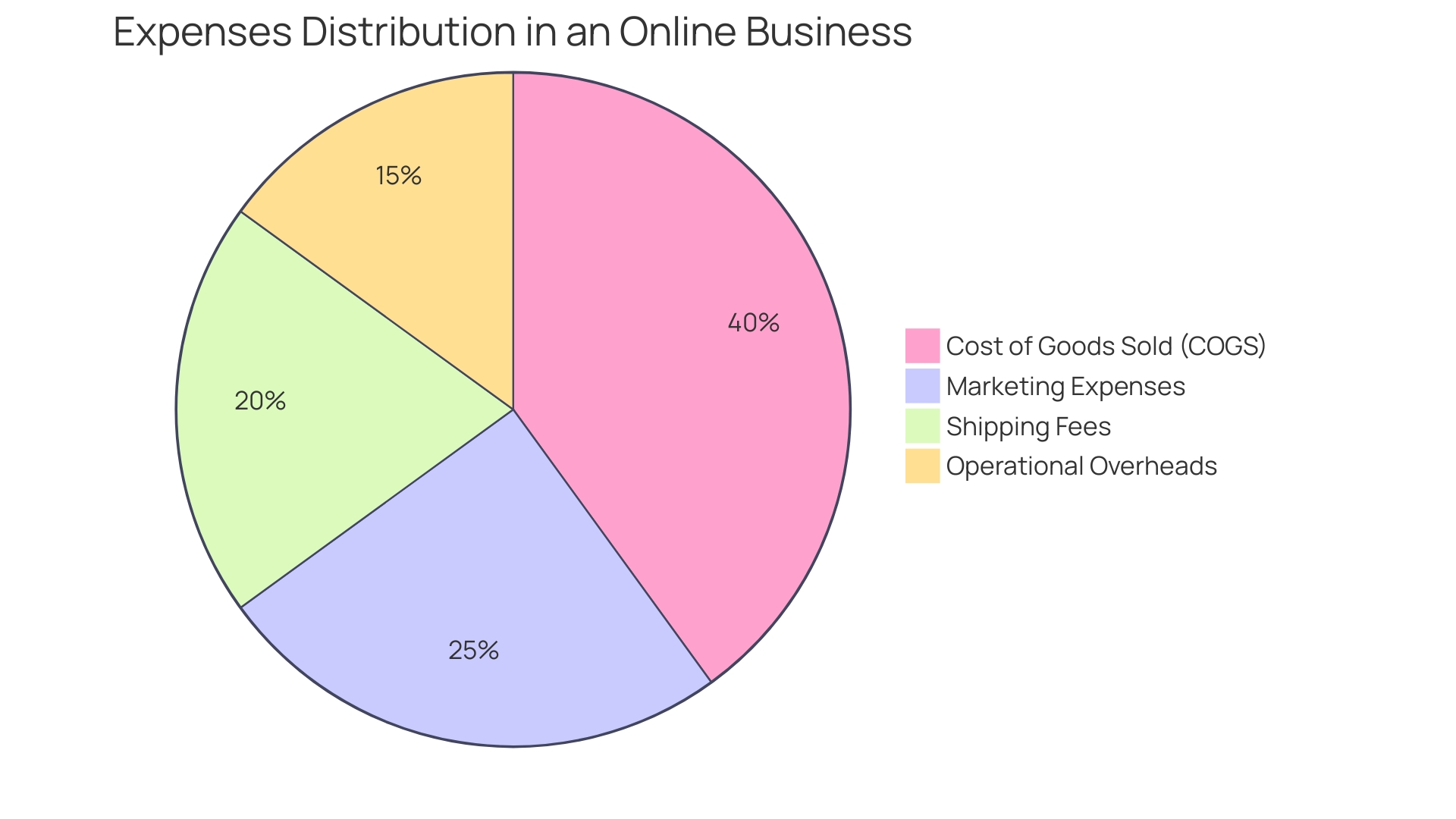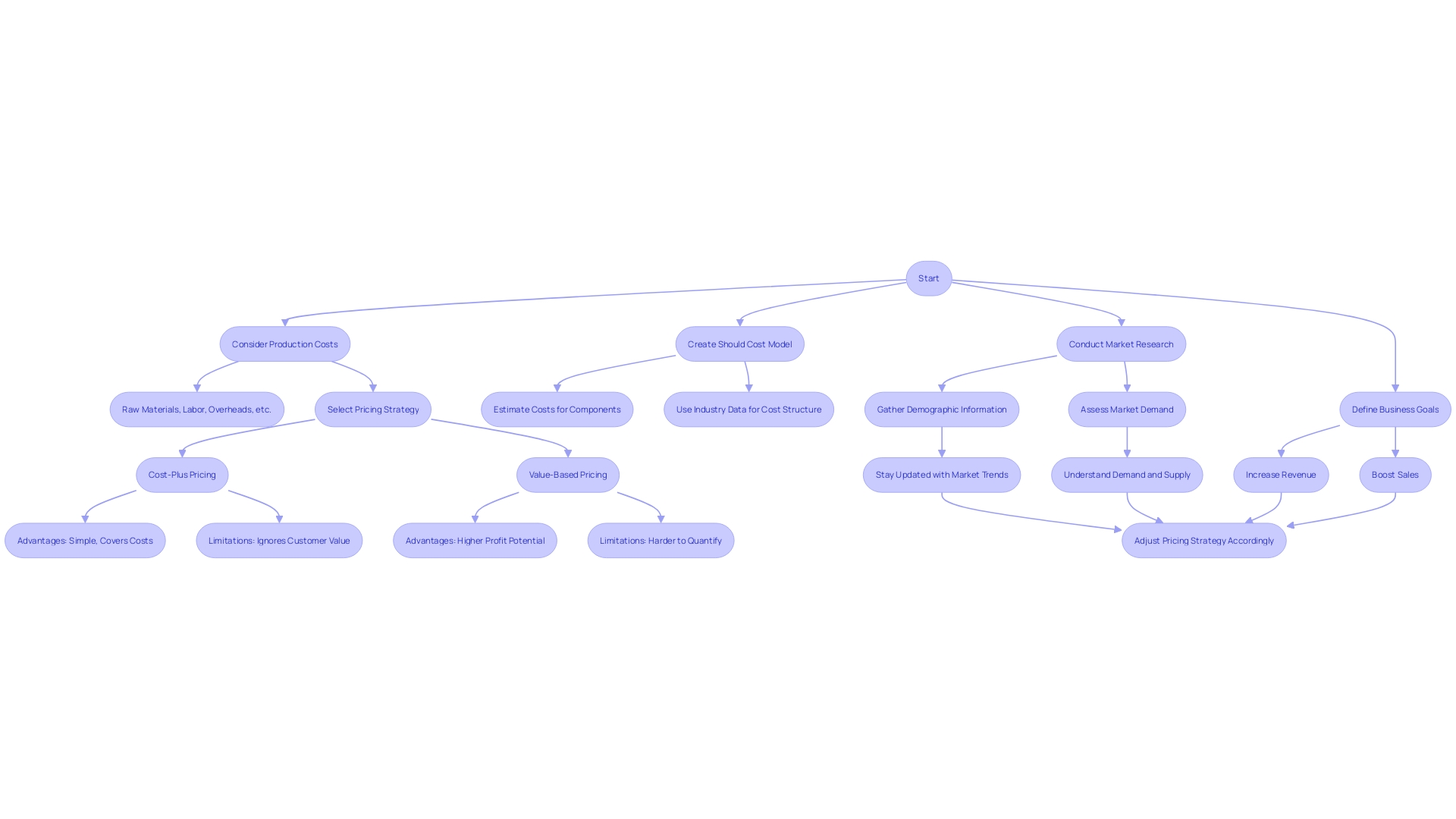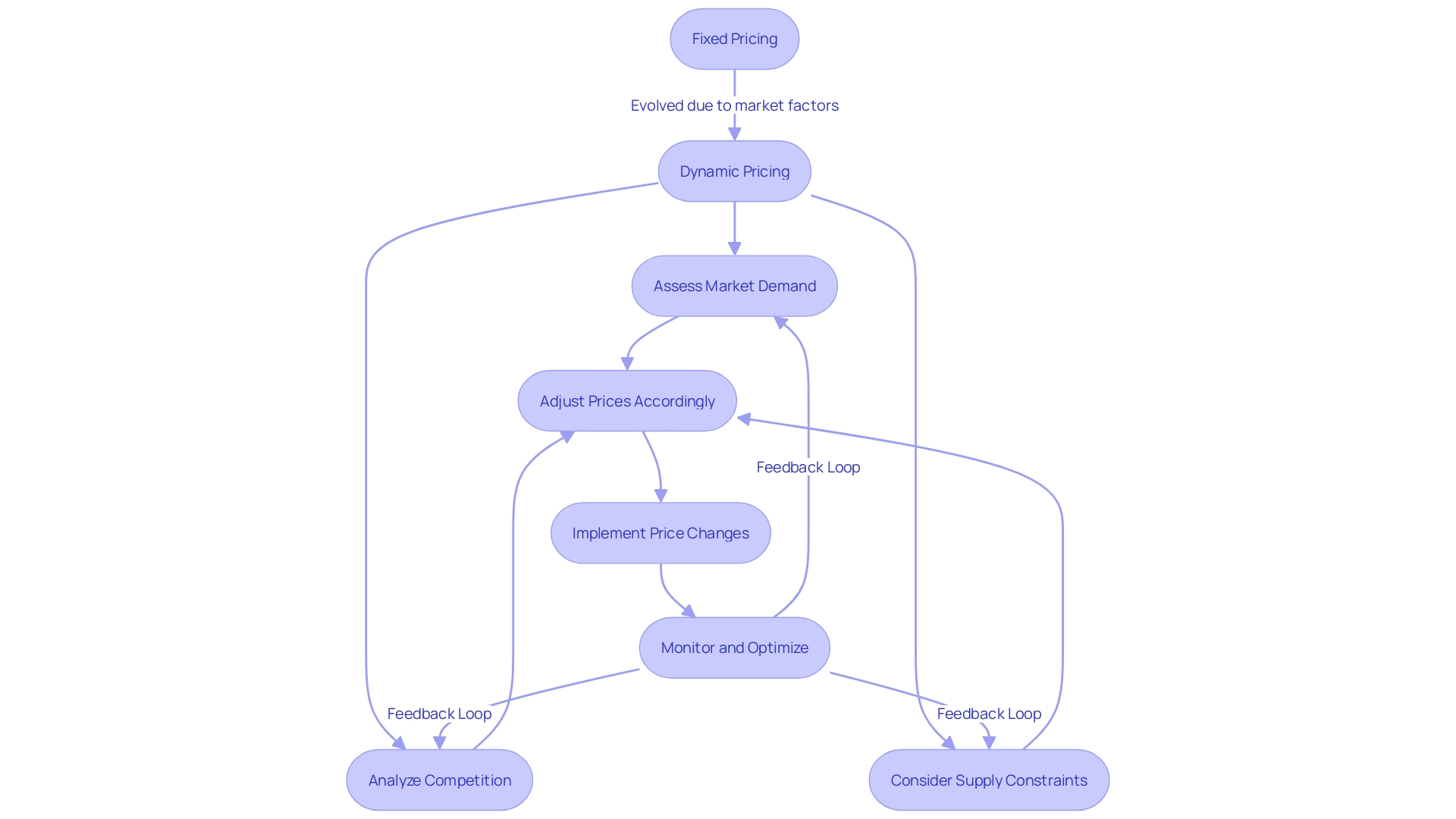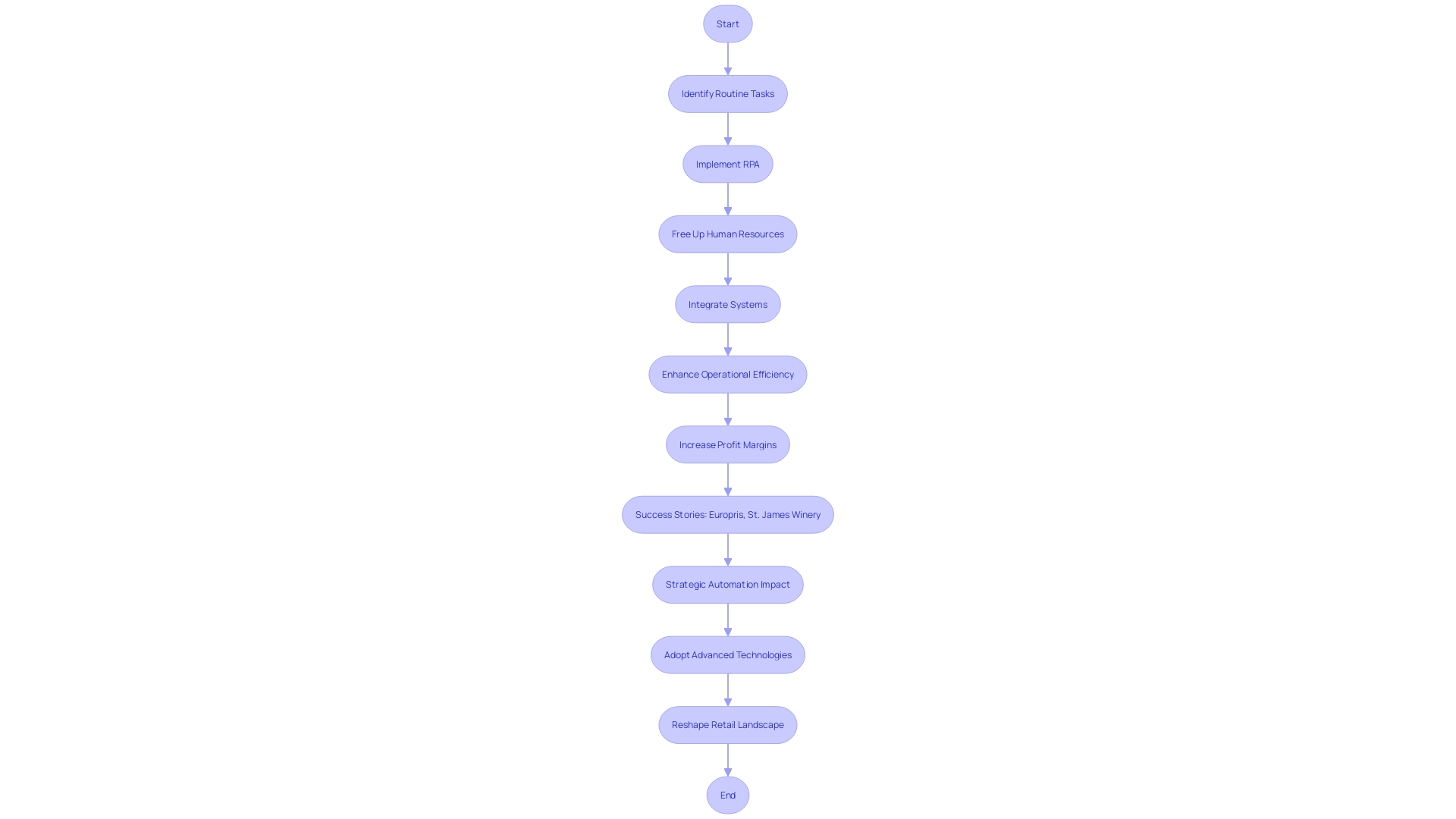Introduction
In the world of e-commerce, profit margin is the lifeblood of a business. It goes beyond a simple number, serving as a powerful indicator of a company's financial health and guiding future decisions. Successful entrepreneurs like Michael Philippou understand the importance of optimizing profit margins by strategically targeting high-margin products and employing efficient business models.
But what are the key components of profit margin calculation? How do factors like pricing strategies, cost management, and inventory management impact profitability? And how can businesses leverage technology and automation to streamline operations and boost profit margins?
In this article, we will explore these topics and provide actionable strategies for increasing e-commerce profit margins. By understanding and implementing these insights, businesses can position themselves for sustainable growth in the competitive e-commerce landscape.
Understanding E-commerce Profit Margin
Profit, the financial heartbeat of an e-commerce operation, measures the degree to which a company retains revenue after incurring all associated expenses. It's not just a static figure but an insightful gauge of company health, signaling the viability of current strategies and guiding future decisions. An ideal gain proportion reflects a harmonious equilibrium between cost efficiency and value generation, enabling entrepreneurs to sustain and expand their ventures.
In the domain of online arbitrage, for instance, astute entrepreneurs like Michael Philippou concentrate on gross income margins, acknowledging their crucial role in assessing operational effectiveness. By strategically targeting high-margin products and employing a patient approach to sales, they underscore the importance of a deliberate and efficiency-driven business model. This strategy is not about fast turnover; it's about maximizing financial gain with minimal effort, and it's a formula that can lead to sustainable growth.
Investing in an e-commerce platform's success, as noted by Retail Technology Review, is akin to nurturing a sapling into an oak—a process demanding not just financial input but also strategic and creative exertion. Comprehending and tracking the monetary gains is a crucial component of this investment, providing distinct understanding into where and how a company can enhance. As companies navigate changing demand and market dynamics, a strong earnings ratio serves as a cushion and indicator of the effectiveness of pricing strategies.
Moreover, the digital age has democratized access to sophisticated analytical tools, allowing even small businesses to perform real-time financial evaluations previously reserved for larger corporations. These tools can analyze the factors that influence the profitability levels, providing a detailed examination of the mechanics of earning money. Therefore, a strong understanding of financial returns is not just advised; it is essential to the entrepreneurial voyage and the quest for online business greatness.
Key Components of Profit Margin Calculation
Comprehending the financial gain ratio in online business entails examining both income and expenses. Revenue is the total amount of money generated from sales across various platforms, whether through a website or a mobile application. On the opposite end of the equation, expenses encompass the costs that are essential to operate an e-commerce enterprise. These costs include the direct production costs such as materials and labor, known as the cost of goods sold (COGS), as well as marketing expenses, shipping fees, and operational overheads.
The financial health indicator of a business is the expression of the difference between revenue and expenses as a percentage. A healthy profit margin is indicative of a company's ability to cover its costs and generate profit efficiently. For example, in the online business industry, a thorough examination of consumer personas and purchase habits can offer valuable insights into cost optimization and enhancing profitability, as evidenced by case studies of internet merchants.
Moreover, with online sales playing a major role in the global economy and allowing businesses to access an international customer base, the profitability and cost management of online transactions have become even more crucial. Recent statistics demonstrate that brand owners on platforms such as Amazon have witnessed sales increase by over 22% annually, highlighting the significance of sustaining a strong financial gain boundary for expansion and longevity in the competitive online marketplace.

Factors Affecting E-commerce Profit Margin
Maximizing profit margins in e-commerce is akin to a strategic chess game, with various factors influencing the final outcome. Pricing strategies must strike a delicate balance between affordability for consumers and profitability for the company. Smart rivals are continuously changing their strategies, which implies that companies must stay adaptable to maintain their advantage. Operating costs, including production expenses such as raw materials and labor, play a significant role in the financial health of an e-commerce venture. For companies producing internally, closely monitoring these expenses is essential.
Additionally, customer acquisition and retention costs must be carefully managed. Attracting and maintaining a loyal customer base is essential, but it must be done cost-effectively to avoid eroding profit margins. Market demand is another pivotal factor; it shapes the potential revenue stream and guides inventory decisions. With the expansion of online trade enabling enterprises to access international markets, comprehending and predicting demand has become more intricate yet progressively advantageous.
The digital marketplace is vast, with e-commerce transactions occurring across desktop computers and mobile devices, through websites and apps alike. The market spans numerous industries, each with its unique dynamics. For example, the beverage industry has seen a surge in online sales, encompassing a broad spectrum of products, from specialty teas to energy drinks.
To navigate these waters successfully, companies can draw on insights from industry pioneers like BCG and leverage analytical tools for real-time financial analytics, as lauded by experts like Michael Philippou. These tools offer organizations, large and small, with the intelligence necessary for informed decision-making. By comprehending key performance indicators and comparing against industry averages, organizations can refine their strategies, aiming not only to meet the average but to surpass it, propelling them into the top echelons of their respective markets.
The industry of online trade is constantly changing, and as we move towards 2024, companies must utilize the potential of data and analytics to adjust their approaches accordingly. By possessing a strong comprehension of the various elements involved and a dedication to continuous evaluation, online businesses can aim to enhance their financial outcomes and achieve long-lasting development.
Pricing Strategies and Their Impact on Profitability
To optimize profitability in the e-commerce sector, selecting a pricing strategy tailored to your business objectives is crucial. Whether the goal is to boost revenue or to elevate sales numbers, the strategy must take into account various elements like production costs, including raw materials, labor, and overheads if products are manufactured in-house. It's also essential to consider the market value of your offerings and how they stand against competitors. For example, cost-plus pricing is a direct method suitable for startups, which includes determining the cost of production and adding a margin for gain. While this strategy is easy to implement and provides predictable profits, it does not factor in market dynamics or competition. On the other hand, value-based pricing aims to price products based on the perceived value to customers, which, although theoretical, can be approximated through different pricing models. Moreover, understanding the dynamics of demand and supply is critical, as evidenced by market behaviors where these forces dictate pricing, as seen in various sectors from retail to travel. Staying updated with the latest market trends, customer preferences, and competitive pricing, along with utilizing data and analytics, allows online retailers to create pricing strategies that not only satisfy customer expectations but also retain a competitive advantage in the constantly changing digital marketplace.

Dynamic Pricing: Adapting to Market Trends and Demand
Dynamic pricing has been a transformative strategy in online business, allowing businesses to adjust their prices in response to a flux in market demand, competition, and supply considerations. This sophisticated pricing model has its roots in historical practices where the interplay of demand and supply shaped the value of goods and services, from humble bazaars to today's global markets. The shift from fixed pricing—a concept popularized by the Quakers for its fairness and transparency—to dynamic pricing reflects an evolution in commerce, driven by the need for agility in an ever-changing market landscape.
In the past, airlines and hotels were pioneers in dynamic pricing, manipulating rates to optimize for fluctuating demand and market variables. Now, online business platforms leverage advanced data analytics and automation tools to refine their pricing strategies. This method not just improves gain margins but also guarantees prices mirror the real-time value provided to consumers. For example, a mobile laundry service called The Laundry Basket recently had to increase its prices due to rising costs in supplies and labor, demonstrating how external factors can necessitate dynamic pricing adjustments.
In the face of giants like Amazon and Walmart, independent online retailers are harnessing data to strategically set prices, balancing profit with demand, competition, and costs. With the right analytics, these businesses can navigate the complexities of pricing strategies and emerge competitive, even in a market dominated by larger players. Dynamic pricing represents more than just flexible pricing; it's a testament to the adaptability and responsiveness that are essential in today's digital marketplace.

Cost Management: Controlling Expenses for Higher Margins
Navigating the financial landscape of e-commerce requires a vigilant approach to cost management. One important tactic involves examining and simplifying costs to strengthen profit ratios. This entails a meticulous examination of operational processes with the intent to enhance efficiency. By leveraging data analytics, businesses can gain profound insights into consumer behavior, such as the decision-making process of online shoppers and the aspects that influence their purchasing decisions. For instance, Chess.com's proactive efforts in establishing a robust IT infrastructure manifest the pivotal role of targeted investments in fostering a company's expansion and user satisfaction.
Recent trends underscore the importance of investing in technology, with mentions of 'operational efficiency' reaching an all-time high in the United States. Companies are not only emphasizing cost discipline but are also channeling investments into technologies like AI that promise to elevate future productivity. This strategic focus on cost control is crucial as firms strive to safeguard their margins amidst economic uncertainties.
In the constantly changing world of online trading, the importance of having a strong and adaptable online platform is crucial. With over two billion individuals projected to engage in online transactions, the capacity to support this burgeoning demand is critical. The implementation of an online trading solution is a multifaceted endeavor that necessitates a comprehensive grasp of both technology and commercial intricacies. Factors such as strategic planning, selection of appropriate technology, meticulous customization, and fluid integration with pre-existing systems are integral to the successful establishment of an e-commerce presence.
Moreover, the profitability of an enterprise is inherently connected to the efficient administration of expenses and income. A careful focus on gross profit margins, instead of net profit margins, can ensure the vitality of core operations. This method, combined with the use of up-to-the-minute financial analytics, can provide organizations with deep insights into their financial well-being, allowing them to identify and tackle the root causes of fiscal performance.
The online business environment is not just about competing with major players like Amazon and Walmart but also about the shrewd use of data and analytics to guide pricing strategies. Even smaller retailers can harness these tools to make informed decisions that optimize inventory management and pricing, thereby creating a competitive edge.
Lastly, the online retail sector has demonstrated remarkable adaptability, with businesses successfully transferring increased operational costs to consumers through well-calibrated pricing strategies. This dynamic, exemplified by Amazon's increase in financial gains, has reinforced the potential for online retail entities to thrive even amid fluctuating economic conditions.
Inventory Management for Lower Costs and Higher Margins
To thrive in the competitive e-commerce landscape, meticulous inventory management is pivotal. The key lies in striking a delicate balance between sufficient stock levels to meet customer demand and minimizing excess inventory that can erode profit margins. Advanced inventory management systems are essential tools that provide real-time visibility into stock levels, assisting enterprises in making informed decisions. By leveraging big data and AI algorithms for demand forecasting, companies can predict future product needs with greater accuracy, thus avoiding the pitfalls of stockouts and overstocks. It's not just about avoiding empty shelves; it's about understanding customer behavior and preferences to tailor inventory to what's really needed, when it's needed. Retailers like Lightspeed have transformed their inventory management with systems that ensure precision and efficiency, a critical move in an era where product variety is vast and consumer expectations are sky-high. The successful implementation of such systems can be the difference between a thriving enterprise and one that struggles to keep up.
Leveraging Technology and Automation to Streamline Operations
Contemporary e-commerce enterprises are harnessing the revolutionary potential of automation technology to enhance their operational efficiency and increase profit margins. By harnessing Robotic Process Automation (RPA), companies are delegating routine tasks—such as data entry, executing workflows, and managing customer interactions—to software bots. These bots adeptly navigate between various applications and platforms, enabling organizations to integrate disparate systems and free up human resources for more strategic initiatives.
The success stories of companies like Europris in Norway exemplify the profound impact of a strategic approach to automation. Europris, after partnering with Swisslog, embarked on a multi-phase automation journey, evolving from concept sketches to a fully operational system. This transition was supported by a comprehensive analysis of current operations and a deep understanding of future requirements, resulting in a design custom-made to their needs.
Similarly, St. James Winery's commitment to innovation has cemented its position as Missouri's largest award-winning winery. Their experience highlights how automation can enhance quality control and maintain competitiveness in a dynamic market. With consumer expectations raised by companies such as Amazon, which has established a new benchmark in online trade, enterprises are acknowledging the necessity to provide more than just convenience, but a remarkable brand encounter that cultivates loyalty and community.
The narrative is consistent across various industries, be it a bakery in Nairobi grappling with manual sales-order processes or the opening of innovative checkout-free stores using Zippin technology in Dublin Airport. The integration of cutting-edge technology is reshaping the retail landscape, as evidenced by Asda's strategic appointment of a Chief Digital Officer to drive its data and e-commerce functions forward.
The retail arena continues to evolve with technology at its core, as noted by Jennifer Richards, a retail technology expert. Businesses are increasingly leveraging online platforms to expand their reach and gather insights into consumer behavior, which, in turn, informs marketing strategies and product development. In this digital era, the wise use of technology is not just a convenience but a necessity for enterprises aiming to thrive and outpace their competition.

Upselling and Cross-Selling: Boosting Average Order Value
E-commerce enterprises can greatly improve their profitability by mastering upselling and cross-selling techniques. Upselling, the art of encouraging customers to purchase a more advanced or feature-rich product than initially intended, can substantially increase the transaction value. For example, a consumer electronics firm might suggest a more powerful model of a gadget at the point of sale. Similarly, cross-selling involves suggesting complementary products, such as recommending a memory upgrade when a customer is purchasing a computer. This not only augments the sale's value but also improves the customer experience by aligning with their needs.
To take advantage of these techniques, companies must have a profound understanding of their customers' desires, preferences, and purchasing behaviors. Successful upselling hinges on creating a personalized experience by anticipating needs and providing tailored solutions. For instance, a cable provider might offer a premium channel package to a subscriber of a basic plan, thereby tapping into the customer's desire for added value and convenience.
Furthermore, leveraging data science is crucial in mapping out consumer personas and understanding the decision-making process of online purchasers. Insights garnered from data analysis can inform strategies to prevent basket abandonment and ensure customer retention. By leveraging customer data effectively, companies can implement personalized product recommendations and targeted marketing campaigns, making upselling and cross-selling efforts more impactful.
In the modern online selling landscape where buyers are increasingly looking for authority over the sales process, enterprises must be skilled at providing the appropriate products at the appropriate time. According to Gartner, 33% of buyers prefer a sales experience devoid of direct sales interaction. This statistic highlights the significance of comprehending post-acquisition value (PAV) to gauge the continuous worth a customer brings, beyond the initial acquisition cost.
The smooth integration of upselling and cross-selling into the online business strategy not only boosts revenue but also enhances customer satisfaction by providing them with options that cater to their unique requirements and preferences. By doing this, online businesses can build stronger customer relationships and gain a competitive advantage in the thriving online marketplace.
Tools and Metrics for Analyzing Profit Margin
To effectively gauge the fiscal health of an e-commerce enterprise, having a firm grasp on key financial metrics is paramount. Gross profit ratio, net profit ratio, return on investment (ROI), and customer lifetime value (CLV) serve as the foundations for profit analysis. These metrics, when regularly assessed with the help of sophisticated analytics tools, provide a panoramic view of profitability and spotlight potential enhancements. Furthermore, the notion of contribution boundary is crucial—a higher boundary indicates sufficient funds to cover fixed costs and is a strong indicator of product profitability. For example, an Amazon business owner who prioritizes high-profit products, such as non-fiction books, LEGO investments, and other online arbitrage opportunities, illustrates the strategic pursuit of efficiency over sheer quantity. This approach highlights the importance of not only monitoring where earnings are generated but comprehending the underlying causes, enabling efficient operations and strategic expansion. As the online shopping landscape evolves with a surge in internet sales, particularly during peak shopping seasons like Black Friday, the significance of meticulous profit margin management becomes ever more pronounced.
Strategies for Increasing E-commerce Profit Margin
To navigate the rapidly evolving landscapes of online business, businesses must embrace strategic growth approaches. Pricing optimization is pivotal; leveraging data analytics allows for precision in pricing and inventory decisions, outmaneuvering larger competitors. Customer retention is enhanced by utilizing data to understand and influence the consumer decision-making process, reducing churn and improving loyalty programs. Shipping and fulfillment costs can be curtailed through strategic partnerships and the integration of automation technologies. Marketing investments should be data-driven, targeting high return on investment and tapping into consumer behavior insights. These tactics are not just theoretical; they are grounded in real-world success stories and current market analyses, ensuring that they are practically applicable and tailored to the contemporary e-commerce climate.
Conclusion
In conclusion, optimizing profit margins is crucial for the success of e-commerce businesses. By strategically targeting high-margin products and employing efficient business models, entrepreneurs can position themselves for sustainable growth. Calculating profit margins involves analyzing both revenue and costs, and understanding the key components of this calculation is essential.
Factors such as pricing strategies, cost management, inventory management, and leveraging technology and automation all play a role in impacting profitability.
Pricing strategies must strike a balance between affordability for consumers and profitability for the business. Understanding market dynamics and competition is crucial in crafting effective pricing strategies. Dynamic pricing, which allows businesses to adjust prices based on market trends and demand, has become a transformative strategy in e-commerce.
By leveraging technology and automation, businesses can streamline operations, enhance efficiency, and free up human resources for more strategic initiatives.
Cost management is pivotal in maintaining higher profit margins. Scrutinizing and streamlining expenses, investing in technology, and implementing advanced inventory management systems are all strategies that can help control costs. Upselling and cross-selling techniques can also boost average order value and enhance profitability.
By mastering these techniques and leveraging data science, businesses can provide personalized experiences and tailored solutions to customers.
In conclusion, e-commerce businesses must embrace strategic approaches to increase profit margins. By optimizing pricing strategies, managing costs, leveraging technology and automation, and implementing effective inventory management, businesses can position themselves for success in the competitive e-commerce landscape. With a focus on data-driven decision-making and a commitment to ongoing analysis, businesses can strive to improve their profit margins and achieve sustainable growth.





